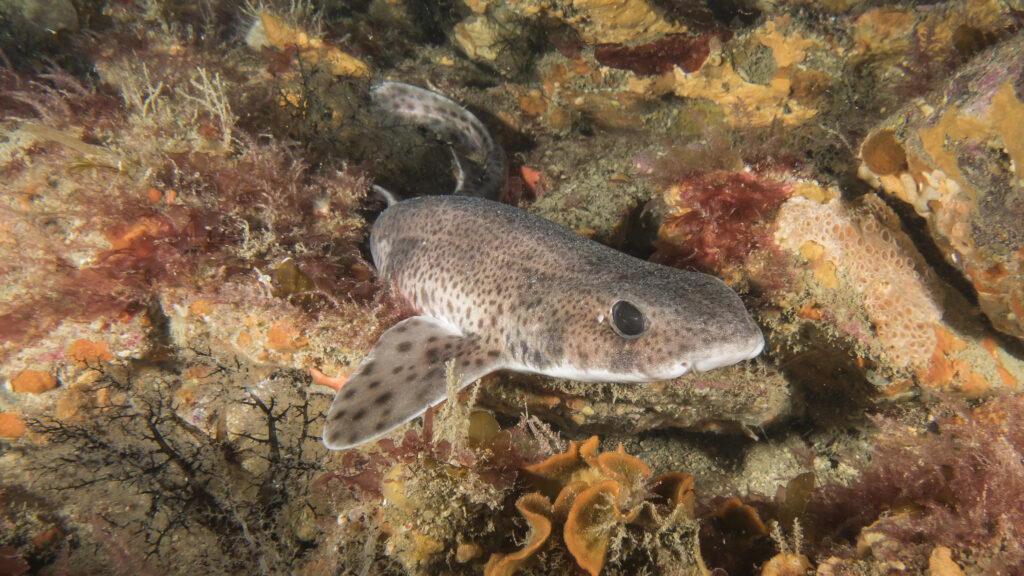Sharks have been swimming in our oceans for 450 million years, so isn’t it time you got to know them a little better? If you want to learn more about identifying these undersea superstars, it’s time to sink your teeth into our handy guide.
5 must-know facts about sharks
First up, let’s learn some bite-sized facts about this fascinating creature…
- A group of sharks is called a school.
- With fossilised records dating back to 450 million years ago, sharks would have lived alongside the dinosaurs and have long outlived them as a species.
- The rings on a shark’s vertebrae can indicate its age.
- Some lay eggs, while others give birth to live young.
- Sharks are apex predators, which means they sit at the very top of the food chain.
What is a shark?
Did you know that sharks are classified as a type of fish? Now you do! All shark species are also invertebrates, which means they don’t have bones.
Their skeletons are made from cartilage, which is the same bendy stuff your nose is made out of. This makes them lightweight, flexible and capable of turning and twisting in the water extremely quickly.
Sharks live all over the world. You’ll find these fantastic fish in every ocean on our planet, including around the UK’s coastlines. And some, such as the bull shark, have adapted to live in shallow freshwater environments such as estuaries and rivers.
How many sharks are there?
As one of the world’s oldest living species, there are also plenty of variations swimming around in our waters. Over 500 species are known to exist, although this number could be even higher since some shark species might live in the deepest, unexplored parts of the oceans.

From the tiny six-inch dwarf lantern shark, which is the smallest shark roaming our waters, to the whale shark, the largest surviving species, there’s plenty of variety on offer for the curious shark spotter.
They don’t just differ in size, though. There are also massive variations in their behaviour, including how fast they can swim through the water. For example, Greenland sharks are the slowest, with their average speed recorded at just 1mph. Meanwhile, the quickest shark ever recorded is the shortfin mako shark, which can zoom through water at around 45mph.
What is a megalodon?
Megalodon is a prehistoric species which died out around 2.3 million years ago.
From studying their fossilised bodies, we know that this shark species is the largest ever recorded, at an average length of around 24m long. If you’re struggling to picture one, that’s roughly the same as three London buses!
Their diet consisted solely of whales, which also gives you a better idea of their size.
To find out more about this species from our experts, ask about our megalodon shark tooth at one of our shark talks here at Deep Sea World!
What do sharks look like?
With so many variations in the species, their appearances can differ depending on things like their preferred habitats, behaviours and diet. However, they have some general similarities to help you identify them.
If you ever get close enough to stroke a shark, you’ll find they don’t have shiny scales, like your typical fish. They’re covered in something called dermal denticles, which are smooth and allow them to swim ten times faster than the average human.
Sharks also have eyelids, which normal fish don’t. These aren’t used for blinking, though, but instead serve a protective purpose when a shark attacks its prey.
For eager shark watchers, it’s often easier to spot the biggest species because they tend to hunt closer to the surface, whilst the smaller sharks prefer to prowl the ocean floor. Apart from size, you can normally tell a surface shark by their darker eyes, which act as natural sunglasses to shield their vision from the sun’s glare.
Shark identification guide
From shark species living locally on our shores, like the shortfin mako and catsharks, to the likes of the sand tiger shark and great white found further from the UK, we’re casting a wide net over some of the most popular shark species to help you identify them.
Identifying sharks in the ocean
Identifying local sharks
See sharks at Deep Sea World!
Fancy putting your shark-spotting skills to the test? Well, you can at Deep Sea World! Check out our exhibits, where you can spot some of the sharks mentioned in our guide, lesser spotted catshark. You can even swim amongst our sand tiger shark and some of his friends in our shark dive experiences here at Deep Sea World!
